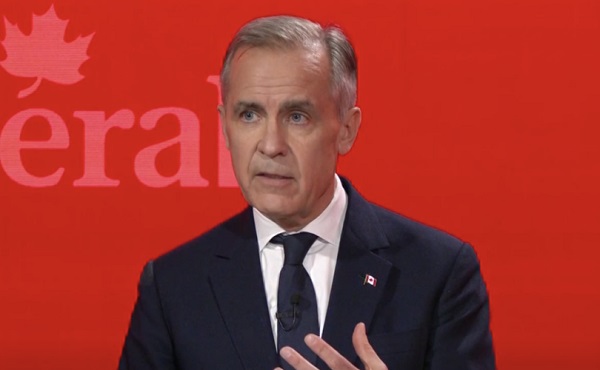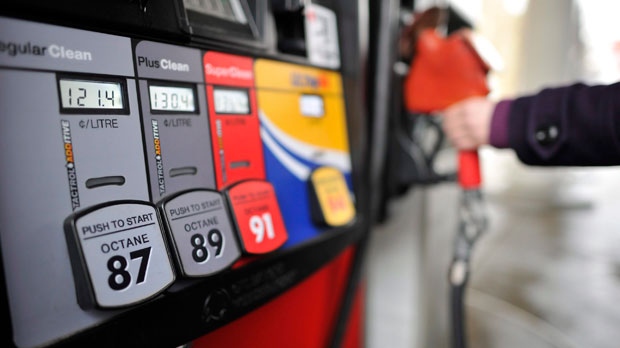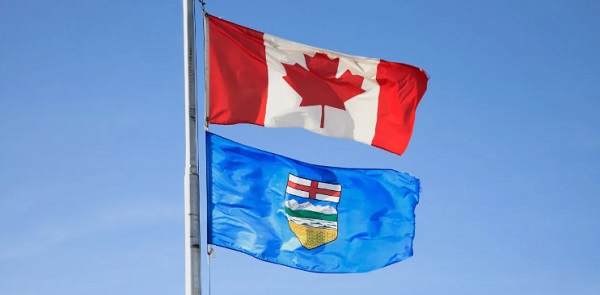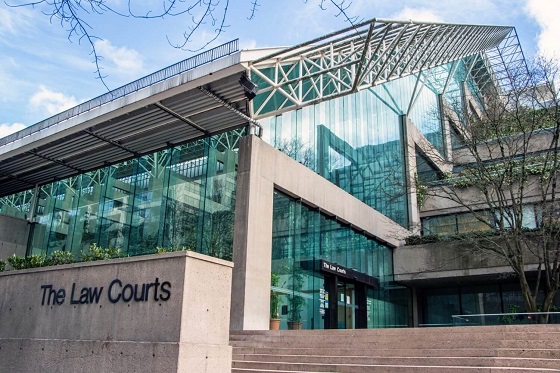Carbon Tax
Prime Minister Mark Carney reduces carbon tax to zero

From LifeSiteNews
Conservative Party leader Pierre Poilievre warned, ‘Carbon Tax Carney is pausing the carbon tax until after the election when he no longer needs your vote but still needs your money.’
Mark Carney, as his first move as Prime Minister of Canada, has dropped the infamous carbon tax.
Moments after his March 14 swearing in, Prime Minister Carney signed legislation to reduce the consumer carbon tax rate on Canadians to zero, essentially removing it from April 1.
“This will make a difference to hard-pressed Canadians, but it is part of a much bigger set of measures that this government is taking to ensure that we fight against climate change, that our companies are competitive, and the country moves forward,” Carney told media in the cabinet meeting room.
“Based on the discussion we’ve had and consistent with a promise that I made, and others supported, during the [Liberal Party] leadership campaign, we will be eliminating the Canada fuel charge, the consumer fuel charge, immediately,” he continued.
However, it is important to note that Carney did not scrap the carbon tax legislation: he just reduced it to zero. This means it could come back at any time.
Furthermore, while Carney has dropped the consumer carbon tax, he has previously revealed that he wishes to implement a corporation carbon tax, the effects of which many argued would trickle down to all Canadians.
First implemented in 2019, the carbon tax was advertised as a way to reduce emissions. However, Liberals have since admitted that the carbon tax has reduced greenhouse gas emissions by only one percent.
The tax is wildly unpopular and blamed for the rising cost of living throughout Canada. Currently, Canadians living in provinces under the federal carbon pricing scheme pay $80 per tonne.
Notably, Carney’s decision to drop the unpopular carbon tax comes just weeks before he is expected to call a federal election.
Conservative Party leader Pierre Poilievre responded to Carney’s move by saying, “Carbon Tax Carney is pausing the carbon tax until after the election when he no longer needs your vote but still needs your money.”
“He’s flip-flopping on his beliefs to trick Canadians into a 4th Liberal government,” he stated on an X post. “If Carney wins, Canada loses.”
Indeed, Carney’s decision also appears to be contrary to his own ideology, as he recently argued that the carbon tax was too low. He also rebuked Trudeau for exempting home heating oil from the carbon tax in 2023.
Furthermore, although Carney has assured Canadians that while he is no longer on the board of the World Economic Forum, he has been a longtime supporter of the globalist agenda, including the United Nations’ energy regulations. In January 2023, he attended the World Economic Forum’s meeting in Davos, Switzerland.
Carney uses his social media to advocate for achieving net-zero energy goals.
“The net-zero revolution is becoming a driver of country competitiveness, job creation & growth,” he posted on X earlier in November. “In the future, great powers will be green powers — and Canada can be a great power.”
Business
Higher carbon taxes in pipeline MOU are a bad deal for taxpayers

The Canadian Taxpayers Federation is criticizing the Memorandum of Understanding between the federal and Alberta governments for including higher carbon taxes.
“Hidden carbon taxes will make it harder for Canadian businesses to compete and will push Canadian entrepreneurs to shift production south of the border,” said Franco Terrazzano, CTF Federal Director. “Politicians should not be forcing carbon taxes on Canadians with the hope that maybe one day we will get a major project built.
“Politicians should be scrapping all carbon taxes.”
The federal and Alberta governments released a memorandum of understanding. It includes an agreement that the industrial carbon tax “will ramp up to a minimum effective credit price of $130/tonne.”
“It means more than a six times increase in the industrial price on carbon,” Prime Minister Mark Carney said while speaking to the press today.
Carney previously said that by “changing the carbon tax … We are making the large companies pay for everybody.”
A Leger poll shows 70 per cent of Canadians believe businesses pass most or some of the cost of the industrial carbon tax on to consumers. Meanwhile, just nine per cent believe businesses pay most of the cost.
“It doesn’t matter what politicians label their carbon taxes, all carbon taxes make life more expensive and don’t work,” Terrazzano said. “Carbon taxes on refineries make gas more expensive, carbon taxes on utilities make home heating more expensive and carbon taxes on fertilizer plants increase costs for farmers and that makes groceries more expensive.
“The hidden carbon tax on business is the worst of all worlds: Higher prices and fewer Canadian jobs.”
Alberta
Carney forces Alberta to pay a steep price for the West Coast Pipeline MOU

From the Fraser Institute
The stiffer carbon tax will make Alberta’s oil sector more expensive and thus less competitive at a time when many analysts expect a surge in oil production. The costs of mandated carbon capture will similarly increase costs in the oilsands and make the province less cost competitive.
As we enter the final days of 2025, a “deal” has been struck between Carney government and the Alberta government over the province’s ability to produce and interprovincially transport its massive oil reserves (the world’s 4th-largest). The agreement is a step forward and likely a net positive for Alberta and its citizens. However, it’s not a second- or even third-best option, but rather a fourth-best option.
The agreement is deeply rooted in the development of a particular technology—the Pathways carbon capture, utilization and storage (CCUS) project, in exchange for relief from the counterproductive regulations and rules put in place by the Trudeau government. That relief, however, is attached to a requirement that Alberta commit to significant spending and support for Ottawa’s activist industrial policies. Also, on the critical issue of a new pipeline from Alberta to British Columbia’s coast, there are commitments but nothing approaching a guarantee.
Specifically, the agreement—or Memorandum of Understanding (MOU)—between the two parties gives Alberta exemptions from certain federal environmental laws and offers the prospect of a potential pathway to a new oil pipeline to the B.C. coast. The federal cap on greenhouse gas (GHG) emissions from the oil and gas sector will not be instituted; Alberta will be exempt from the federal “Clean Electricity Regulations”; a path to a million-barrel-per day pipeline to the BC coast for export to Asia will be facilitated and established as a priority of both governments, and the B.C. tanker ban may be adjusted to allow for limited oil transportation. Alberta’s energy sector will also likely gain some relief from the “greenwashing” speech controls emplaced by the Trudeau government.
In exchange, Alberta has agreed to implement a stricter (higher) industrial carbon-pricing regime; contribute to new infrastructure for electricity transmission to both B.C. and Saskatchewan; support through tax measures the building of a massive “sovereign” data centre; significantly increase collaboration and profit-sharing with Alberta’s Indigenous peoples; and support the massive multibillion-dollar Pathways project. Underpinning the entire MOU is an explicit agreement by Alberta with the federal government’s “net-zero 2050” GHG emissions agenda.
The MOU is probably good for Alberta and Canada’s oil industry. However, Alberta’s oil sector will be required to go to significantly greater—and much more expensive—lengths than it has in the past to meet the MOU’s conditions so Ottawa supports a west coast pipeline.
The stiffer carbon tax will make Alberta’s oil sector more expensive and thus less competitive at a time when many analysts expect a surge in oil production. The costs of mandated carbon capture will similarly increase costs in the oilsands and make the province less cost competitive. There’s additional complexity with respect to carbon capture since it’s very feasibility at the scale and time-frame stipulated in the MOU is questionable, as the historical experience with carbon capture, utilization and storage for storing GHG gases sustainably has not been promising.
These additional costs and requirements are why the agreement is the not the best possible solution. The ideal would have been for the federal government to genuinely review existing laws and regulations on a cost-benefit basis to help achieve its goal to become an “energy superpower.” If that had been done, the government would have eliminated a host of Trudeau-era regulations and laws, or at least massively overhauled them.
Instead, the Carney government, and now with the Alberta government, has chosen workarounds and special exemptions to the laws and regulations that still apply to everyone else.
Again, it’s very likely the MOU will benefit Alberta and the rest of the country economically. It’s no panacea, however, and will leave Alberta’s oil sector (and Alberta energy consumers) on the hook to pay more for the right to move its export products across Canada to reach other non-U.S. markets. It also forces Alberta to align itself with Ottawa’s activist industrial policy—picking winning and losing technologies in the oil-production marketplace, and cementing them in place for decades. A very mixed bag indeed.
-

 Business2 days ago
Business2 days agoLargest fraud in US history? Independent Journalist visits numerous daycare centres with no children, revealing massive scam
-

 Haultain Research15 hours ago
Haultain Research15 hours agoSweden Fixed What Canada Won’t Even Name
-

 Business2 days ago
Business2 days ago“Magnitude cannot be overstated”: Minnesota aid scam may reach $9 billion
-

 Censorship Industrial Complex2 days ago
Censorship Industrial Complex2 days agoUS Under Secretary of State Slams UK and EU Over Online Speech Regulation, Announces Release of Files on Past Censorship Efforts
-

 Business15 hours ago
Business15 hours agoWhat Do Loyalty Rewards Programs Cost Us?
-

 Business3 hours ago
Business3 hours agoLand use will be British Columbia’s biggest issue in 2026
-

 Energy4 hours ago
Energy4 hours agoWhy Japan wants Western Canadian LNG
-

 Business33 mins ago
Business33 mins agoMainstream media missing in action as YouTuber blows lid off massive taxpayer fraud










